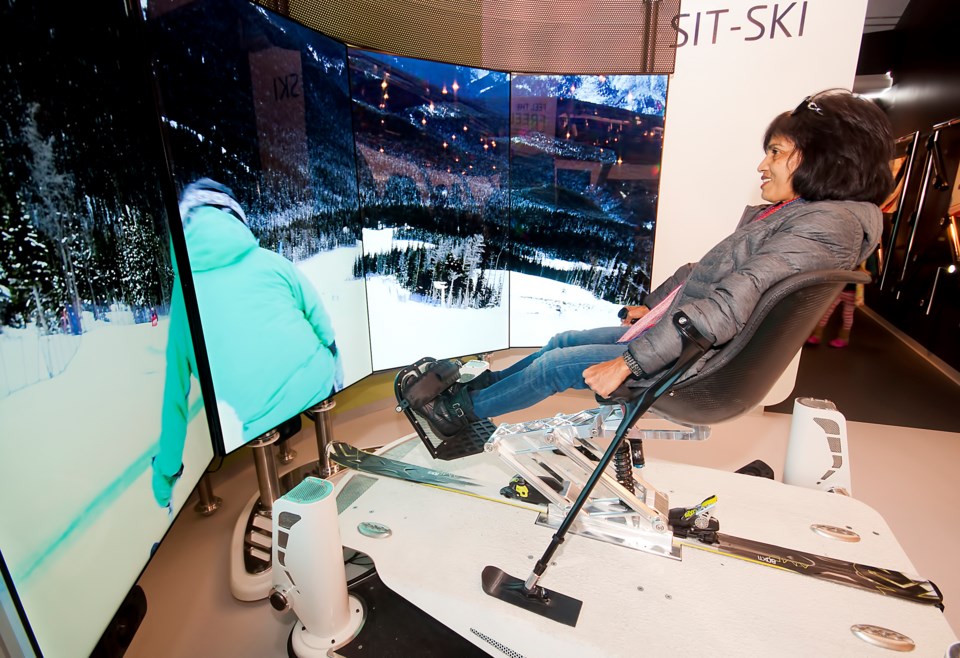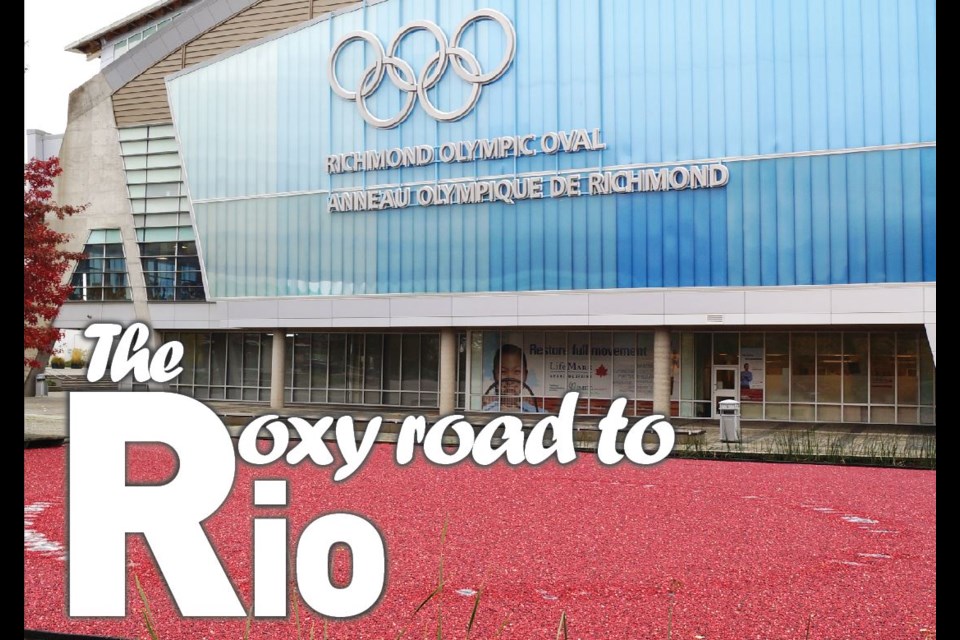The Richmond Olympic Oval Corporation is claiming expenses of close to $46,000 for sending four Oval and/or City of Richmond senior managers to Rio de Janeiro, Brazil during the Olympic Games in August to, in part, to market the recently-opened Richmond Olympic Experience (ROX) museum.
The trip came as the City of Richmond-owned Oval approaches the one-year anniversary of opening ROX, its official Olympic Museum Network (OMN) facility built via funding from the Oval, as well as the city.
The Oval, once used for speed skating at the 2010 Olympic Games, is attempting to market ROX to eventually turn a profit.
Currently, the corporation does not pay rent to the city nor property taxes ($1.6 million last year), and also received upwards of $6.3 million of additional external monetary support while recording a $1.1 million operating deficit in 2015.
Oval spokesperson Aran Kay said Oval executives were invited by the Canadian Olympic Committee (COC) to “activate at Canada House” in Rio.
Several reasons were given for the Oval’s “activation,” or participation, including: marketing the Oval to national and international sports organizations for high-performance sporting events and training; marketing ROX as a tourist destination; procuring sports memorabilia for ROX; and “supporting ongoing relations” with members of the International Olympic Committee, the COC and the OMN.
“In addition to supporting the Canada House activation, the team also held numerous meetings with key officials from Olympic organizations, national and international sports organizations, Olympic sponsors and others,” said Kay, adding that the Oval receives “value-in-kind support for (ROX) estimated at $5-6 million annually from the IOC and COC.”
Kay noted marketing the Oval is important because the facility’s high-performance program generates more than $1 million a year in revenues. Meanwhile, hosting high-performance events generates an average of $235,000 in annual revenues, added Kay.
Heading to Rio were George Duncan, who wears two hats, that of the City of Richmond’s chief administrative officer as well as the Oval’s CEO, John Mills, the Oval’s chief operating officer, Shana Turner, the Oval’s director of finance, and John Irving, Richmond’s director of engineering.

Kay said the Oval compensated the City of Richmond for the time Duncan and Irving were spending on Oval-related business.
He said the Rio trip was paid for by money raised through ROX sponsorship funds, which is directed into a general account and used for “extraordinary expenses” for ROX.
Sponsor dollars directed to ROX can be used for various things, said Kay. Among the handful of local sponsors are YVR, River Green and Richberry Group. River Green’s residents received member passes to the Oval in return for its sponsorship, but any details beyond that are confidential, Kay explained.
Aside from sponsorship — which depends on the Oval’s Olympic branding — the Oval is said to be economically dependent on outside monetary support, thus an importance is placed on drawing in visitors, new members to use its recreational facilities, as well as organizations to host events.
In 2015, the Oval had $16.1 million in total revenues, including $7.6 million in membership, admission and program fees. Additionally, 2015 Oval revenues include the city’s $3.8 million of contributions, as well as a $2.5 million grant from the 2010 Games Operating Trust Fund (established by the federal government, the trust fund supports post-Vancouver 2010 Olympic Games facilities. It has a balance of $54 million dedicated to the Oval). As well, the Oval operates with a $1 annual lease and property tax exemptions.
Last year it had expenses of $13.7 million, of which $7.9 million goes to salaries, including Mills’ $227,000 of compensation.
When factoring out the city’s contributions and other expenses and revenues, the Oval actually recorded a $1.1 million operating deficit, according to the city’s 2015 financial statements. Since 2011 (post Games), it has accumulated losses of about $2.2 million even with approximately $16 million of support from the city during that time.
Factoring in the city’s contributions, in 2015, the Oval realized a $2.4 million surplus, put towards a reserve used for facility repairs.
Included in the aforementioned total revenues for 2015 was an additional $500,000 transfer from Tourism Richmond’s hotel tax reserve to purchase assets for ROX. To build ROX, a $10 million facility, $2.5 million of municipal funds, as well as $2.5 million of hotel taxes, were used.
In 2014, the Oval, a subsidiary of the city, created a subsidiary company of its own called VROX Sport Simulation Ltd., a Victoria-based company, which is 50 per cent owned by the Oval. It has five directors, four of whom are Oval executives, including Duncan and Turner. The non-Oval director is Robert Stanners, who operates a virtual reality company, VRX Advanced Simulators.
According to the Oval’s annual public report, VROX was created to build three of ROX’s five sport simulators (bobsleigh, kayak, sit-ski, racecar and ski jump), which together are touted as the biggest draw for tourists to the facility.
“VROX is a government partnership established to develop, manufacture and sell sport simulators to the Oval and third party customers, as well as to maintain the simulators for the Oval,” notes a city’s financial statement.
Few financial details of VROX are released in the Oval’s public reports, other than the fact it realized revenues of $868,880 and expenses of $798,001 in 2015, for a profit of $70,879.
Kay said no further details are available, as it is a private company.
“We have to respect our private partners’ rights,” said Kay.
As this is the first year of ROX operating there are no reports on its financial status, Kay added.
The Oval set a target of 11,590 ROX visitors for 2016, said to be a conservative estimate as marketing ramps up (an effort paid for by a $575,000 boost from the City of Richmond in 2015).
Part of selling ROX has involved meetings with members of the Olympic Museum Network. For that, Turner has been tasked to travel to Europe annually for meetings with museum officials. For instance, in 2014 Turner went to Helsinki for the OMN Collections and OMN General Assembly, for three weeks, costing $9,466, according to expense records.
The IOC-sanctioned OMN consists of 22 facilities worldwide, whose stated goal is to promote the Olympic movement. Its purpose is also to encourage cooperation between the museums, such as sharing collections and developing efficiencies.
Each museum has a different set of memorabilia. Some, including ROX, include a national or local sports hall of fame (the Oval has the Richmond Wall of Fame for prominent local athletes). Regular adult prices vary among the facilities: The main OMN facility in Lausanne, Switzerland costs 15 Swiss Francs (about $20 Canadian.) Greece’s Thesaloniki Olympic Museum costs two Euros (about $3 Canadian) and the Seoul Olympic Museum, consisting of static displays, is free. Meanwhile, ROX costs $17.



